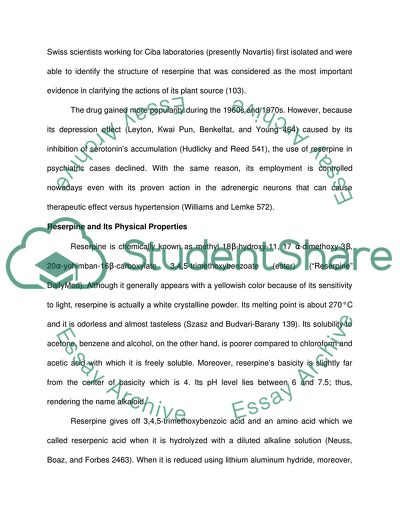Cite this document
(The Discovery of Reserpine Research Paper Example | Topics and Well Written Essays - 1500 words, n.d.)
The Discovery of Reserpine Research Paper Example | Topics and Well Written Essays - 1500 words. Retrieved from https://studentshare.org/health-sciences-medicine/1735915-reserpine
The Discovery of Reserpine Research Paper Example | Topics and Well Written Essays - 1500 words. Retrieved from https://studentshare.org/health-sciences-medicine/1735915-reserpine
(The Discovery of Reserpine Research Paper Example | Topics and Well Written Essays - 1500 Words)
The Discovery of Reserpine Research Paper Example | Topics and Well Written Essays - 1500 Words. https://studentshare.org/health-sciences-medicine/1735915-reserpine.
The Discovery of Reserpine Research Paper Example | Topics and Well Written Essays - 1500 Words. https://studentshare.org/health-sciences-medicine/1735915-reserpine.
“The Discovery of Reserpine Research Paper Example | Topics and Well Written Essays - 1500 Words”, n.d. https://studentshare.org/health-sciences-medicine/1735915-reserpine.


